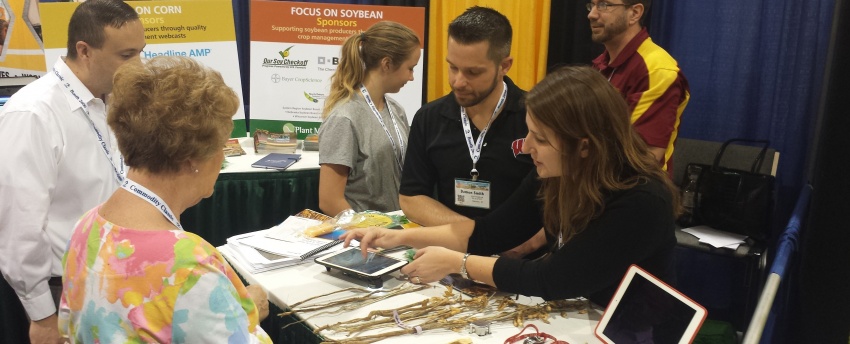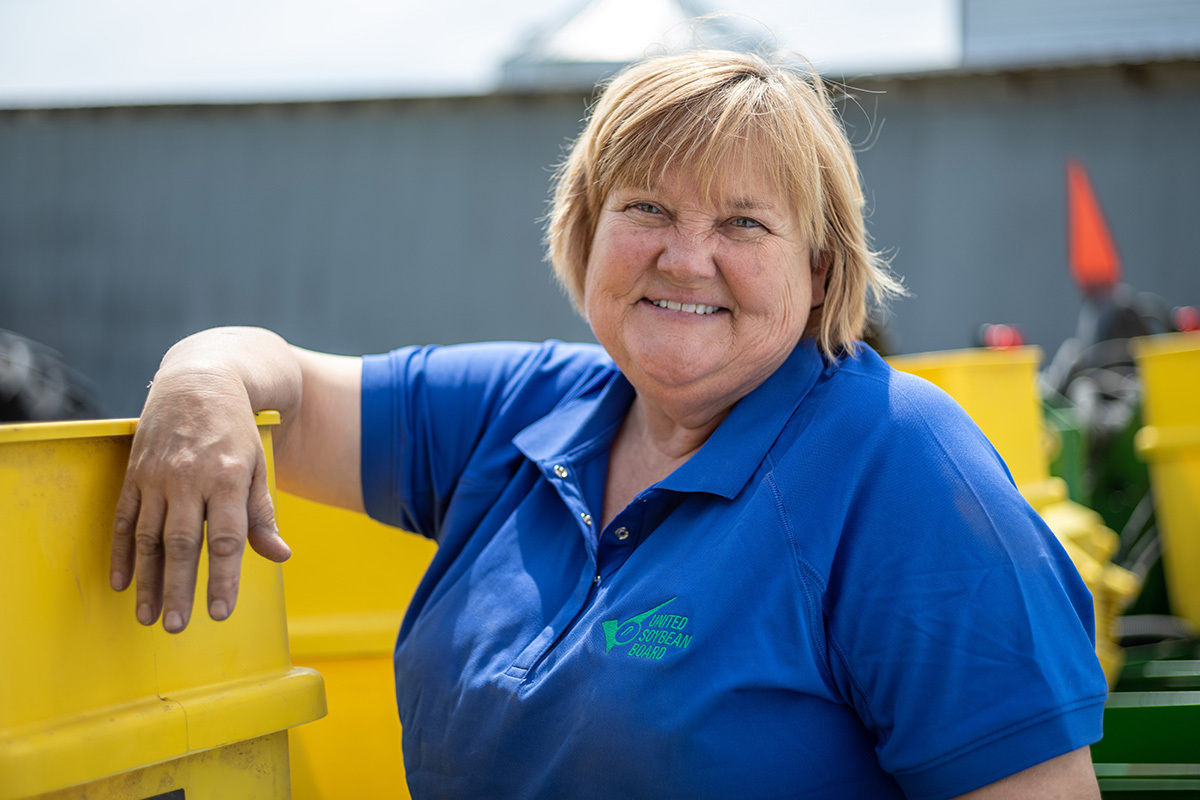Don’t Let Charcoal Rot Leave You High and Dry

Identification and prevention are the best ways to manage soybean disease that blocks water flow
With the possibility of a dry growing season always right around the corner, U.S. soybean farmers should always be on the lookout for a disease that thrives when the weather is hot and water is scarce.
Smith and Kiersten Wise, Ph.D., extension specialist for field crop diseases at Purdue University, work on a project supported by the soy checkoff and North Central Soybean Research Program (NCSRP) to help farmers manage the disease.“Charcoal rot is more of a dry-year-type of disease,” says Damon Smith, Ph.D., extension field crops pathologist at the University of Wisconsin-Madison.” It can infect the plant in all types of conditions, but the dry years are when we see the most damage.”
“Awareness is so important,” says Wise, pictured above (foreground, at right) demonstrating how to identify the disease. “Farmers have to know what fields have the disease so they can make better decisions the next time that field goes into soybeans.
Disease Identification
Charcoal rot is a disease best diagnosed by splitting the stem of a soybean plant in half and looking for black spots inside. Those flecks are fungi that can block the flow of water and nutrients into the plant.
Identifying charcoal rot by looking at plants from the outside is more difficult. Visible clues don’t appear until late in the pod-fill stage. They include reduced vigor, yellowing and wilting – typically in a patchy distribution within fields. Premature plant death with leaves still attached is the most common symptom.
Preventative Management
Once discovered, most of the best management tactics against the disease don’t come until after the crop has been harvested. No fungicides or seed treatments have shown the ability to control the disease.
Instead, here are a few practices that can help:
- Plant resistant varieties – Scientists have found varieties with partial resistance, but they work best when combined with other strategies.
- No-till – Untilled fields usually offer better microbial activity, nutrients and moisture capacity, all of which can reduce the severity of charcoal rot.
- Irrigation management – Supplemental irrigation can slow the disease’s infection of a plant as well as the damage it causes, particularly during drought conditions.
- Crop rotation – Rotating to non-host crops, such as wheat, is a must in problem fields. And while corn, grain sorghum, sunflowers and other crops can also be charcoal rot hosts, certain strains of the disease show preference for certain crops. That means, depending on which strain is present in your field, rotating to even a host crop can help manage charcoal rot.
- Seeding rates – Lower rates won’t prevent charcoal rot infection, but it will decrease plant stress, minimizing loss.
“The biggest thing you can do is choose varieties with good resistance,” says Smith. “In-season, there’s nothing farmers can do on the back end of it. We’re trying to help people identify the disease so they can make some management decisions the next time there are soybeans in that field. It’s all preventative.”
Research for New Methods
As Smith and Wise continue work on their checkoff-funded project, they’ll look for new ways for farmers to manage charcoal rot.
“We’re continuing to look at research from the perspective of resistant varieties, as well as we’re looking at fungicides, seed treatments and in-furrow products,” says Wise. “So, really, we’re looking at multi-faceted management systems to try to control this disease.”



